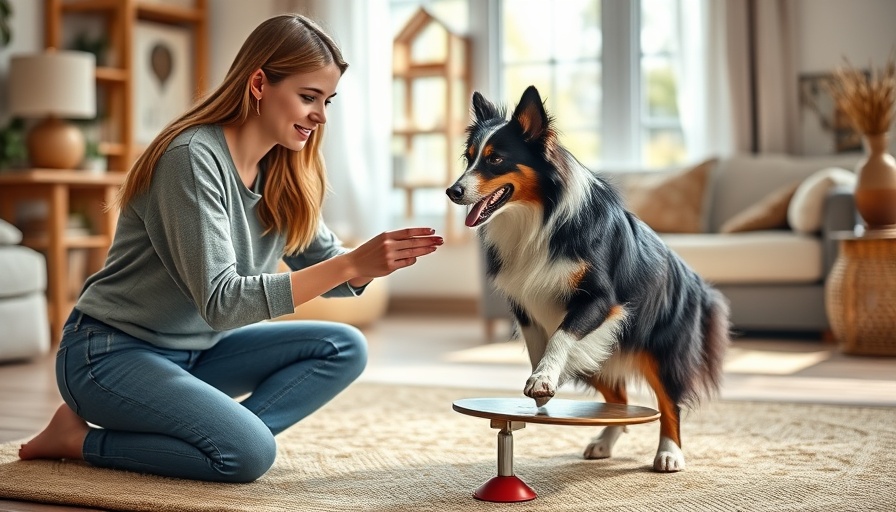
Understanding Your Pet's Nighttime Energy
As dog owners, you might have experienced the delightful chaos of your furry friend unexpectedly bursting into action late at night, often referred to as "the zoomies." While this behavior might seem harmless or even amusing, it can be a sign that your pet’s internal biological clock is off-kilter. Recognizing this is the first step toward restoring harmony in your household.
What Are Circadian Rhythms?
Similar to humans, pets adhere to natural daily cycles known as circadian rhythms, guiding their activities, eating, resting, and recovery. These rhythms are foundational to your pet's health, and when disrupted, they can lead to issues like poor sleep quality, digestive problems, and uncharacteristic behaviors like the ecstatic zoomies that occur just when you’re trying to relax.
Your Pet's Meridian Clock: An Ancient Insight
In Traditional Chinese Medicine (TCM), the concept of the Meridian Clock provides a valuable framework for understanding your pet's energy flow. The Meridian Clock operates on a 24-hour cycle that defines when energy peaks through various organ systems, thus regulating your pet’s physical and emotional functions. For example, feeding and physical activities should align with these peak times to optimize health.
Signs of an Out-of-Sync Rhythm
When a pet’s daily routine is misaligned with their circadian rhythm, several behaviors may emerge, including:
Difficulty settling down at night
Irregular bathroom habits
Poor appetite or overeating
Increased anxiety or excitement
Understanding these signs can help you pinpoint when adjustments are necessary to bring balance back to your pet's life.
Aligning Activity and Feeding Schedules
The key to restoring your pet’s harmony lies in adjusting their daily routine. Aligning feeding, activity, and rest with their internal schedule can help reduce hyperactivity at night. According to TCM:
Feed your pet between 7 a.m. and 11 a.m. to align with their stomach and spleen meridians.
Engage in physical and mental stimulation from 1 p.m. to 5 p.m. to correspond with peak energy in the small intestine and bladder meridians.
This will likely prevent late-day energy spikes and enhance overall well-being.
The Role of Environment
Environmental factors also play a crucial role in maintaining your pet's circadian rhythm. Exposure to natural light during the day helps regulate your pet's internal clock. Similarly, creating a calm, dark environment during sleep hours can help promote restful sleep.
Practical Steps to Resetting the Internal Clock
To assist your furry friend in getting back to their normal schedule, consider implementing these strategies:
Time-Restricted Feeding: Design a consistent feeding schedule to help regulate their internal clock.
Natural Light Exposure: Allow them to bask in sunlight during the day to assist in regulating their rhythm.
Calm Evening Routines: Establish a relaxing atmosphere before bed, minimizing stimulation to cue rest.
By being mindful of these adjustments, you’ll provide your pet with a structurally sound routine that encourages healthy behavior.
Common Misconceptions About Zoomies
Many owners may regard nighttime zoomies as simply goofy behavior or the natural exuberance of youth. In reality, they can indicate a significant misalignment in your pet's healthcare routines. Taking time to understand the underlying causes of these behaviors will enhance your connection with your pet and improve their overall wellness.
Summing Up: The Importance of Your Pet’s Biological Clock
Recognizing and aligning with your pet's natural rhythms can profoundly impact their health and happiness. Rather than dismissing those evening zoomies, it’s time to take proactive steps to synchronize your pet's daily routines with their internal clock.
By doing so, you not only improve their nighttime behavior but also enhance their overall quality of life. Tune into their needs, and watch as peace returns to your nights.
 Add Row
Add Row  Add
Add 




Write A Comment